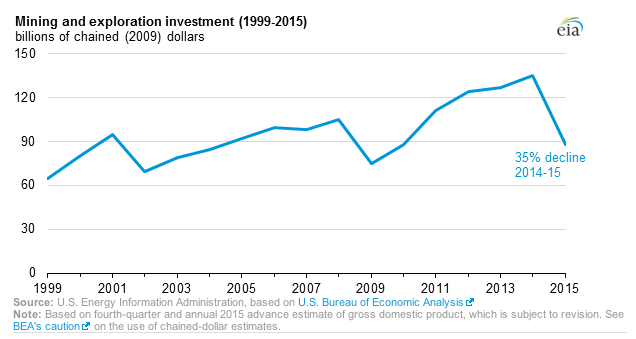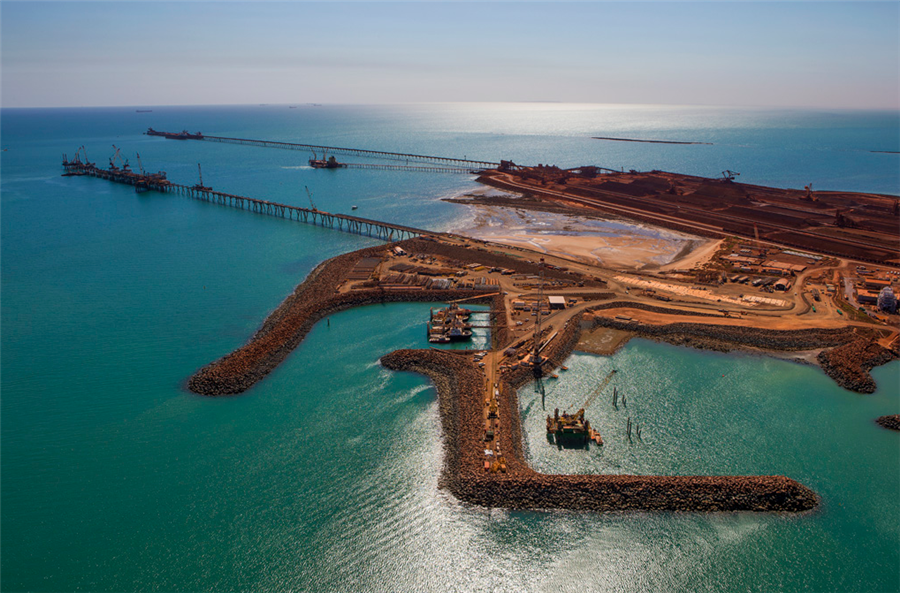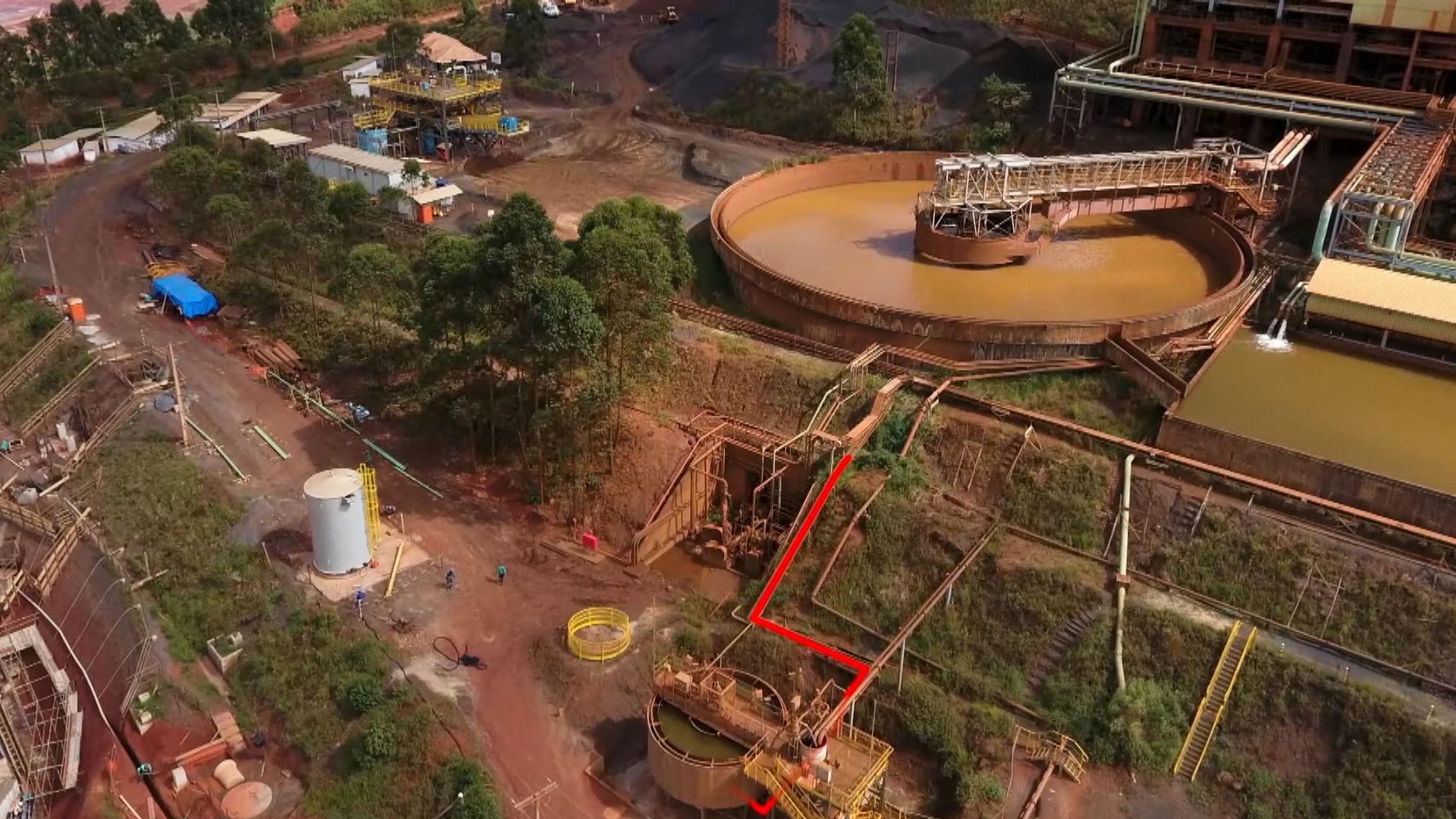US mining and exploration investment declined 35 pct in 2015
Mining and exploration investment declined 35% in 2015, the second largest year-over-year decline since the U.S. Bureau of Economic Analysis (BEA) began reporting the series in 1948. Most mining and exploration investment reflects petroleum exploration and development, but the category also includes natural gas, coal, and other minerals. Mining and exploration investment declined from $135 billion in 2014 to $87.7 billion in 2015, weighing down investment growth more than any other segment of nonresidential investment. Total private fixed investment, of which mining and exploration is a small subset, grew 4% in 2015 to $2.7 trillion. Low commodity prices remain a significant factor in U.S. firms’ investment decisions.
U.S. gross domestic product (GDP) grew 2.4% in 2015, according to fourth-quarter and annual 2015 advance estimates by BEA, the same rate as in 2014. Gross private domestic investment contributed 0.8% to the 2.4% GDP growth in 2015. BEA tracks several types of private investment, broadly split into residential and nonresidential. Within nonresidential are three categories: equipment (such as industrial and transportation equipment), intellectual property products (such as software and entertainment), and structures (which includes mining and exploration but also commercial, manufacturing, power, and communication structures).
Mining and exploration investment as a share of total private investment declined from 5.2% in 2014 to slightly more than 3% in 2015. Low oil prices remain a major factor in oil exploration and production firms’ decisions to reduce capital expenditure.
Fourth-quarter earnings statements from U.S. oil companies indicate plans to further reduce capital expenditure to balance spending with lower cash flows until crude oil prices increase enough to make investments economic. These oil-company reductions could continue to put downward pressure on investment spending in the broader U.S. energy sector.
More News
Rio Tinto posts lowest Q1 iron ore shipments since 2019, tempers forecast
April 15, 2025 | 03:55 pm
Trump orders tariff probe on all US critical mineral imports
April 15, 2025 | 03:16 pm
{{ commodity.name }}
{{ post.title }}
{{ post.date }}







Comments